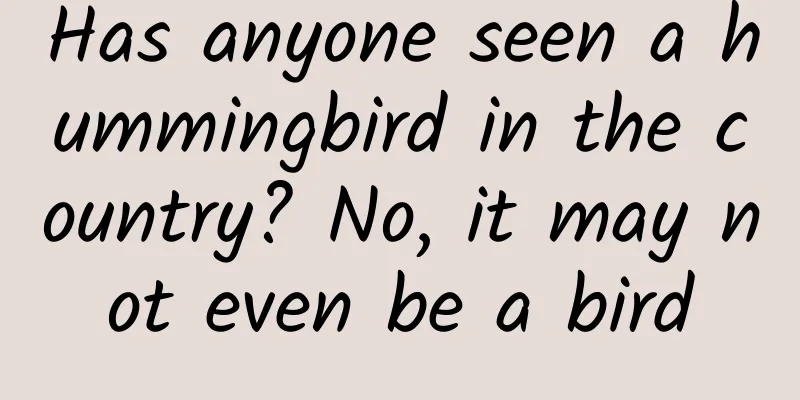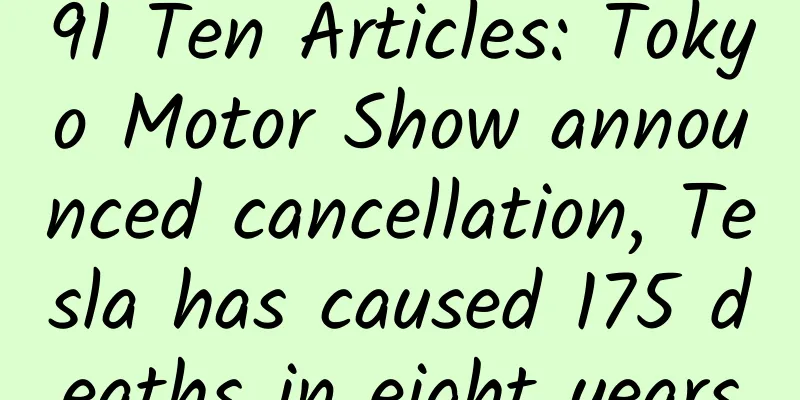Has anyone seen a hummingbird in the country? No, it may not even be a bird

|
“There are hummingbirds in the wild in China” Many friends said they had seen hummingbirds in China. Rumor Analysis This must be a mistake. Hummingbirds are not native to China and are unlikely to be encountered in the wild. However, there are many creatures that do look similar to hummingbirds at first glance and may be mistaken for hummingbirds. Many friends have an illusion: I must have seen a hummingbird! Why do I say it is an illusion? It turns out that there are really no local hummingbirds in China. In fact, wild hummingbirds can only be seen in America . Could it be that scientists are wrong? If not, what kind of creature is the "hummingbird" we have seen? Hummingbird may not even be a bird Let us recall together what the "hummingbird" looks like: active among the flowers, small in size, only slightly larger than a bee, and able to hover in the air while sucking nectar - thanks to the popularization of exquisite documentaries, hummingbirds, which are thousands of miles away, have become well known to the Chinese people. So when we encounter a creature that is so similar to a hummingbird, we often give this strange little thing a familiar name. Little do we know that although it looks similar to a hummingbird, it is another animal, and sometimes it is not even a bird. They are actually a type of moth that roams during the day, and are commonly known as "hummingbird hawk-moths" (note that this name is actually not standardized and its origin is confusing). Most of these hawk moths have a bloated body, which seems a bit out of harmony with their two pairs of small wings, making people wonder if these small wings can really carry their fat bodies? However, these wings not only allow them to fly, but also allow them to stay steadily in front of flowers in the air until they finish eating nectar. This is due to the high-speed flapping of the wings. A long-beaked hawk moth photographed by the author Some flowers have no intention of looking for bees to work for them, and they extend their olive branches to these hawk moths - they have very long flower tubes, or have long spurs - the petals extend back like a long tube structure, and their flowers store nectar at the bottom of this tube. This structure discourages insects like bees, and only the long mouthparts of hawk moths can suck the deepest nectar, but it also takes some effort. Long-beaked hawk moth visiting a flower. Photographed by the author The mouthparts of hawk moths are like long straws. They are rolled up when not in use. When hovering in front of a flower, they stretch out the "straw" and carefully insert it into the flower. This is not difficult if the flower opening is large, but some flowers "exclusive to hawk moths" have long and thin flower tubes, which also means that the flower opening is also small. Hovering while inserting the long and thin mouthparts into the flower is like an aerial acrobatics. The stable and fast flapping of wings allows them to master this difficult stunt. The maximum length of the Great Comet Orchid is prepared for the long-beaked hawk moth. Photographed by the author There are many types of hawk moths that collect nectar from flowers like hummingbirds. It is a bit too general to simply call them "hummingbird hawk moths". We might as well get to know the common types. The most common ones must be members of the long-beaked hawk moth family, and the most common one is the red bean long-beaked hawk moth, which appears frequently in both the north and the south. The red bean long-beaked hawk moth is not difficult to identify. The hair on its back is gray, and when it flies, we can see large yellow spots on its hind wings. The other two long-beaked hawk moths are different. For example, the back of the blue-backed long-beaked hawk moth is green, which is a rare feature among long-beaked hawk moths. The black long-beaked hawk moth has a black back and a crescent-shaped yellow spot on its hind wings. Photographed by the author Green-backed long-beaked hawk moth photographed by the author The entire family of long-beaked hawk moths (genus) come out to collect nectar during the day, but the more common one in the south is the coffee hawk moth. As the name suggests, the coffee hawk moth has scales when it just emerges as a moth, but after a short period of time, most of the scales on its wings fall off, leaving the transparent wings we usually see. Transparent wings are not unique to the coffee hawk moth. The black-edged hawk moth commonly seen in the north also has transparent wings, but there is a circle of black edges around their wings, as if drawn with a marker. Black-edged Hawkmoth (note its transparent wings) Photo by the author These birds also drink nectar, but they are not hummingbirds In addition to these diurnal hawk moths, are there any birds in our country that eat nectar? Yes, there are! And they also have the same gorgeous colors as hummingbirds. In the south, it is easy to see a small creature called fork-tailed sunbird, which is as big as a hummingbird - only 10 cm - and that's with a long beak and tail. This bird that feeds on nectar is very "friendly" and can often be seen in major prosperous cities such as Guangzhou, Xiamen, and Hangzhou. When it is indulging in nectar, it doesn't care if humans get one meter close to it. The Fork-tailed Sunbird's settlement in the city has a lot to do with the large number of street trees planted in the city, such as Bauhinia and various cherry blossoms . These red-flowered plants rely on birds for pollination, and they can provide birds with sufficient nectar , so it is not surprising that the Fork-tailed Sunbird settles down. The gorgeous fork-tailed sunbird photographed by the author **In addition to the sunbird, many birds with "nectar birds" and "flower-pecking birds" in their names also feed on nectar. **Most of these nectar-feeding birds live in southern my country, and many species can only be seen in the tropical rainforests of Yunnan. However, there are also some less "professional" nectar-feeding birds all over the country, such as the white-headed bulbul, which is not small in size and will also grab a few mouthfuls of nectar to taste. Red-backed flowerpecker and its favorite nectar plant, Shrimp Flower (it's time to test your eyesight) Photographed by the author Unlike hummingbirds, the nectar-eating birds mentioned above do not have the same superb hovering ability as hummingbirds. They can only land in certain positions and put their heads into flowers to suck nectar. Some flowers (such as Heliconia) have evolved into "stools" for birds to rest on during the long evolution, making it convenient for pollinating birds to eat and drink. Finally, to sum up, hummingbirds are not native to China, so it is unlikely that we can see real hummingbirds outdoors in China. The species that we think look like "hummingbirds" are actually mostly the ones mentioned above. I believe that after reading this article, you will be able to recognize the "fake hummingbird" at a glance the next time you see it. Looking in the mirror of rumors Nature is amazing. There are many species that look very similar but are distantly related, or that look very different but are relatives. It is really hard to tell them apart if you are not a professional. However, in our busy lives, it is already quite precious if we can stop and observe these tiny creatures and guess whether they are hummingbirds. Planning and production Author: Wengxi Diqi Biotechnology Bachelor Reviewer: Huang Chengming, Researcher at the Institute of Zoology, Chinese Academy of Sciences Planning丨Ding Zong Editor: Ding Zong Proofread by Xu Lai, Lin Lin The cover image and the images in this article are from the copyright library Reprinting may lead to copyright disputes |
>>: Raisins + soda = Nature paper? Innovative discoveries may be hidden in your kitchen!
Recommend
Toyota admits defeat and announces $10 billion investment in the US. Trump, the top troll in the US, is laughing.
Toyota recently announced that it will invest $10...
Analysis of Douyin short video competitors in 2019!
In this article, the author will analyze and comp...
Science in the hot spots of the week: my country will establish a near-Earth asteroid defense system
I wish you all a happy Labor Day. Here are the mo...
What happened to some Huabei users connecting to the central bank’s credit reporting system? What kind of user groups have been connected to the credit reporting system?
Some Huabei users have access to the central bank...
2022 Lucky Calendar electronic version, 2021 Lucky Calendar Baidu network disk
2022 Lucky Calendar electronic version, 2021 Luck...
With the world’s longest battery life and the support of Huawei 5G, how confident is the Aion LX, which claims to be a supercar SUV?
On August 29, GAC New Energy released its flagshi...
Are your eyes afraid of the cold? Tears keep flowing when the wind blows in winter
Audit expert: Liu Dongbao Chief Physician of Opht...
2022 Chengdu Tea Tasting Studio is a good place for appointments and exchanges of tea
Chengdu Tea Studio Reservation: 135-5021-2450 Sen...
A fetus found to have "super male syndrome" needs to be aborted, otherwise it will become a criminal when it grows up?
“Are children with super male syndrome potential ...
Kaikeba Data Analysis High Salary Training Program Elite Class-030
Kaikeba Data Analysis High-salary Training Progra...
How detailed are the design details of big companies? Let’s take a look at the actual combat case of QQ Browser!
Data from the third quarter of 2020 show that the...
Why would the live streaming room for selling goods be blocked? What's the violation?
“Why can’t the product be put on the shelves?” “W...
[Creative Cultivation Program] The mystery of the origin of mitochondria: How was the energy factory of eukaryotic cells built?
Regarding the origin of mitochondria, scientists ...
Traffic monetization optimization skills practical chapter
This article focuses on the three most popular AP...
How much does it cost to attract investment in Lishui’s e-book mini program? What is the investment quotation for Lishui e-book mini program?
Starting a business requires costs, and mini prog...









